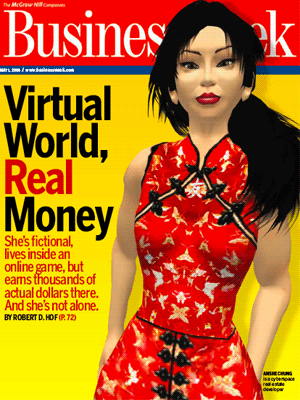The other evening I was having a drink with friends and we were discussing the phenomenon of virtual worlds such as World of Warcraft and Second Life. Basically we’re not that well informed and we had two questions: why and how? Why are so many people spending so much time in these parallel worlds, even to the point of neglecting their real lives? We concluded that “People need to escape, pretend they are someone else or to meet new people<. To go a little bit further, I thought part of the answer to “Why?< was probably in the “How?< so I decided to read a bit more about the trend.
Online games like World of Warcraft have not really evolved over time with new features but thanks to the internet players have the ‘connected to other real players’ experience. The success of these kinds of games is the experience of playing with ‘real’ opponents or allies.
Linden Lab, the publisher of Second Life, only provides a virtual 3D environment: no buildings, cars, special weapons in fact there is practically no ‘official content’ provided. But sometimes less is more! This original minimalism is probably the reason why it took quite a long time to take off: the world had to be created by people. Launched in July 2003, Second Life now has more than 4,500,000 residents (i.e. real people playing online). It is becoming a key part of real life. Residents create or buy their environment: houses, clothes, virtual pieces of art… The imagination of residents and their virtual budget is the only limit. Real places like Mont-St-Michel have been recreated, and you can even visit it.

Political groups, universities and big companies such as IBM, DELL, Amazon and many more have bought virtual land for promotions. They’ve built virtual billboards, paid for virtual sandwich board advertising, organized virtual events and handed out virtual goodies (T-shirts, cars, …)
A virtual currency called the Linden Dollar is used to buy the creations of other residents. The interesting thing is that it is possible to change real money against Linden Dollars, and vice versa. As residents retain the rights to their digital creations, this allows hundreds of people to earn enough money to live in the real word. They build houses, craft goods or cut virtual hair. For instance, Reuters opened an office and Adam Reuteurs (Adam Pasick in real life) reports on the news from Second Life. Visit his blog and check the currency chart (Linden vs US Dollars). The money and goods flow in Second Life can be compared to a real market economy.
Basic membership is free. So why not create your own avatar (virtual person) and discover why these virtual words are becoming the next big thing, with very real consequences on our lives.












